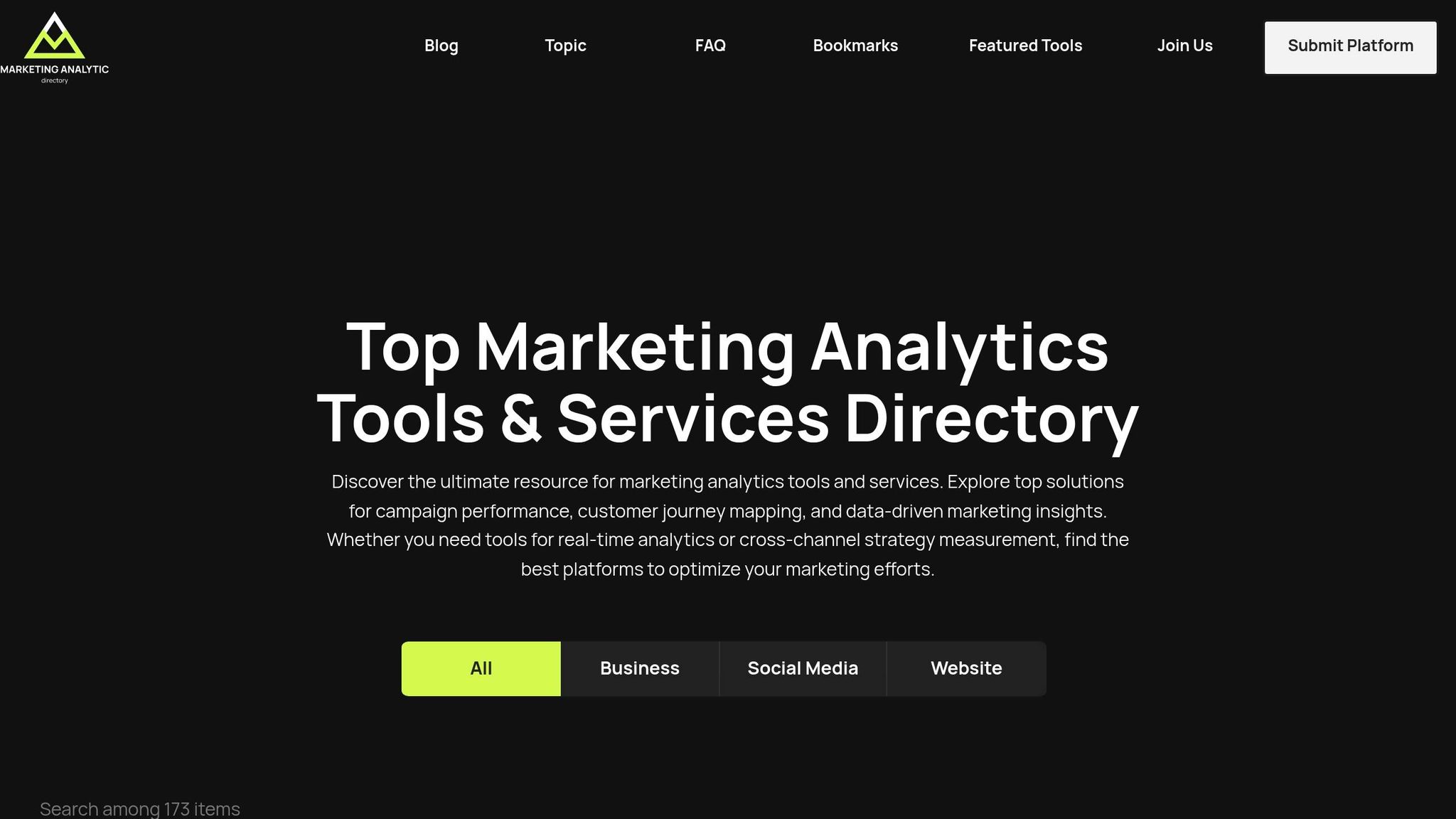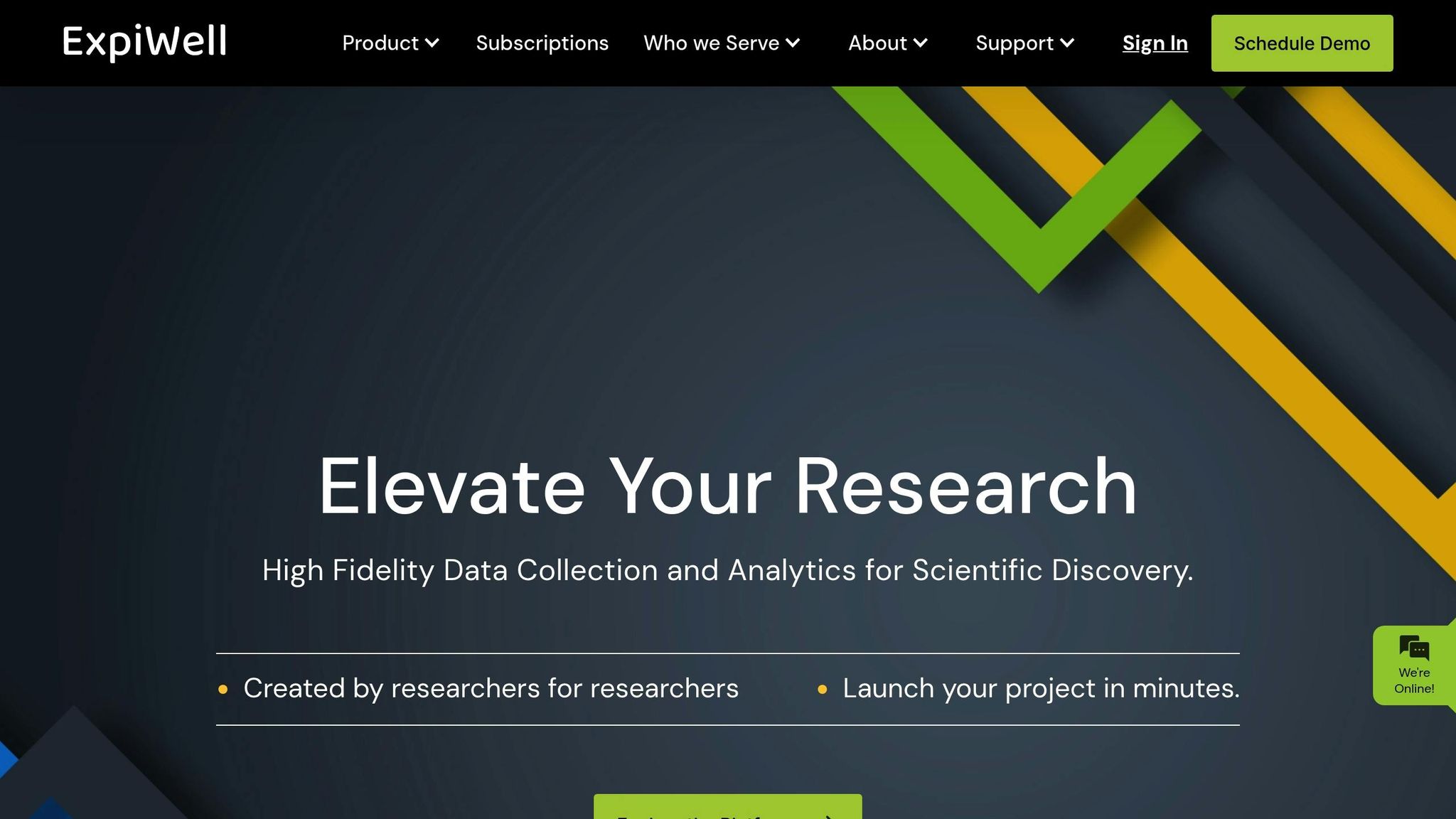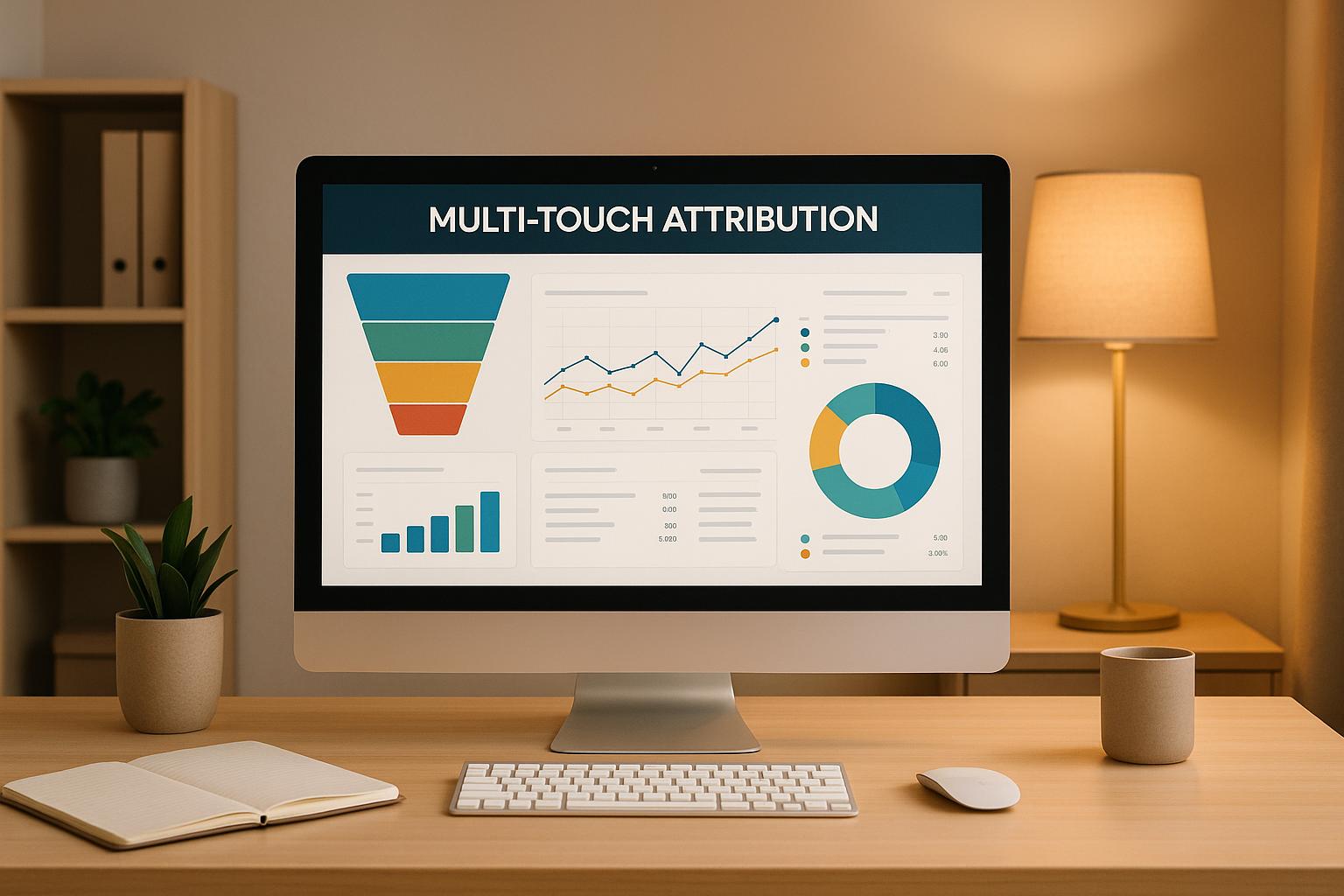Ethnographic research goes beyond basic surveys by observing people in their everyday environments, offering deeper insights into their behaviors, motivations, and decisions. This approach is particularly valuable for creating detailed psychographic profiles, which analyze values, interests, and lifestyles rather than just demographics.
To succeed, you need tools that combine multimedia data capture, remote functionality, and privacy compliance. Features like video/audio recording, live streaming, diary studies, and encryption are key. Integration with analytics platforms ensures your findings are actionable.
Key Takeaways:
- Multimedia Capture: Record video, audio, and images simultaneously for richer insights.
- Remote Data Collection: Use real-time streaming and mobile-friendly tools for better participation.
- Privacy Compliance: Tools must follow U.S. laws like CCPA, offering encryption and anonymization.
- Integration: Seamless export and API options connect insights to broader analytics systems.
For U.S. businesses, balancing functionality, compliance, and usability is critical. Platforms like ExpiWell stand out for their secure, user-friendly features. Always test tools with free trials to ensure they meet your needs.
Digital Ethnography: Approaches and Tools
How to Choose Ethnographic Data Collection Tools
Choosing the right tools for ethnographic data collection means focusing on features that ensure accurate insights while adhering to U.S. privacy regulations. The best tools combine powerful data capture capabilities with easy integration options, helping researchers gather meaningful insights while staying compliant.
Multimedia Data Capture
A good tool should handle video, audio, and image capture simultaneously to record non-verbal cues, tone, and environmental context. This synchronization allows researchers to analyze how different types of data interact in real time, capturing moments that might otherwise be overlooked.
Cloud storage and mobile-friendly designs are also key. They make it easier to access and manage large volumes of data, especially when working on-the-go or conducting fieldwork in diverse locations.
Real-Time and Remote Data Collection
Reaching a wide range of participants across the U.S. requires tools that support remote data collection. Real-time streaming capabilities are invaluable for observing behaviors as they happen, reducing the reliance on participants’ memory, which can sometimes be unreliable.
Live streaming also lets researchers step in when needed - clarifying instructions, offering guidance, or asking follow-up questions. Meanwhile, asynchronous features like diary studies help collect data over extended periods, accommodating participants in different time zones or with busy schedules. Mobile-first designs make participation easier, boosting engagement and ensuring more complete datasets. Time-stamped data further enriches findings by linking behaviors to specific events or conditions, which is especially useful for assessing the impact of campaigns.
Data Privacy and Compliance
Privacy is a top priority when conducting ethnographic research in the U.S., especially with regulations like the California Consumer Privacy Act (CCPA) in place. Tools should include consent management features, allowing participants to control how their data is used. Encryption during both transmission and storage is another must-have, protecting sensitive information and fostering trust.
Anonymization is critical, too. Advanced tools can automatically remove or mask personal details to safeguard participants’ identities. However, ethnographic data often includes unique, identifiable elements, which can complicate efforts to maintain confidentiality. Features like data retention controls and geographic restrictions help ensure compliance with state-specific privacy laws.
By adhering to these privacy standards, tools can integrate more smoothly with broader analytics systems.
Integration with Analytics Platforms
Combining qualitative ethnographic data with quantitative analytics provides a fuller understanding of consumer behavior. Tools that support seamless integration make it easy to link insights with marketing analytics platforms. Features like standard data export formats allow findings to be transferred into statistical software, business intelligence tools, or marketing systems without hassle.
API connectivity takes this a step further by enabling direct data sharing between ethnographic tools and existing tech stacks, reducing manual work and the risk of errors. Real-time data synchronization ensures insights are available immediately, helping businesses make timely, informed decisions.
For those exploring integration options, the Marketing Analytics Tools Directory offers a helpful resource. It lists platforms compatible with ethnographic research tools, enabling businesses to blend qualitative insights with performance metrics. Tools that support multiple export formats - such as video clips, transcripts, and structured data - add even more flexibility, making it easier to share findings across teams or with external partners.
Marketing Analytics Tools Directory Overview

The Marketing Analytics Tools Directory serves as a go-to resource for businesses looking to find and compare top marketing analytics tools, data solutions, and services. Whether it's real-time analytics, campaign tracking, audience insights, A/B testing, or business intelligence, this platform streamlines the decision-making process by offering a structured way to evaluate options.
Tools are neatly grouped into categories with essential details like pricing and features. The directory provides two listing options: Free Listings for basic visibility and Featured Listings for greater exposure. This setup gives users flexibility while making it easier to navigate and find the right solution.
To keep the directory up-to-date, developers can submit their tools directly through a submission feature. This ensures the platform stays relevant with the latest marketing analytics innovations. Additionally, the FAQ section offers practical advice to help businesses choose tools that align with their specific needs. By organizing platforms with clear feature breakdowns, the directory enables researchers to pinpoint solutions that address complex requirements efficiently.
sbb-itb-5174ba0
Best Ethnographic Data Collection Tools
ExpiWell

ExpiWell is a standout choice for ethnographic data collection, meeting high standards for security and ease of use. This platform ensures data remains secure and anonymous while allowing participants to onboard remotely through a mobile app. It also supports multiple languages, making it accessible to diverse user groups. Additionally, ExpiWell offers precise timing controls, enabling researchers to schedule data prompts at specific intervals for better accuracy and consistency.
Tool Comparison
When choosing ethnographic tools, it's essential to weigh their features against your research priorities. Here's a closer look at key factors like multimedia support, real-time functionality, security, integration, and usability.
Multimedia Capabilities
Look for tools that allow seamless use of photos, videos, and audio recordings. Tools designed with mobile users in mind often provide better engagement and higher-quality data collection.
Real-Time Data Collection
Opt for platforms that enable live data capture and offer scheduled prompts. This ensures participants can document their experiences as they happen, providing richer insights.
Data Security and Compliance
Check that the tool adheres to strict security standards, such as HIPAA or GDPR. Features like enterprise-level encryption and privacy controls are vital for safeguarding sensitive information.
Integration with Analytics Platforms
A good tool will support smooth data transfer through standard export formats or API connectivity, making it easier to analyze findings with your preferred platforms.
Ease of Use and Pricing
Consider how intuitive the platform is to use and whether its cost aligns with your budget. A balance between affordability and functionality is key, especially if your team has varying levels of technical expertise.
These factors provide a solid framework for evaluating the tools discussed in the following sections.
How to Select the Right Tool
Choosing the right ethnographic data collection tool starts with understanding your research goals and how they align with your business objectives. Are you looking to dive into consumer behavior, refine product development, or improve customer experience? Pinpointing your focus will help you identify the features that matter most.
Tools can range from free options to enterprise-level platforms with steep annual fees. Be sure to factor in all costs - subscription fees, training, storage, and integration expenses. Many U.S. businesses lean toward mid-tier solutions that strike a balance between functionality and ease of use.
Compliance matters, especially for businesses in the United States. Tools with built-in GDPR and CCPA compliance not only save time but also help you avoid potential legal headaches. This is a key consideration for ensuring your research stays on track and adheres to relevant regulations.
Another critical factor is usability. No matter how advanced a tool's features might be, they’re only effective if your team can use them. Look for platforms that offer training resources, responsive customer support, and interfaces that match your team's expertise. A user-friendly tool ensures smoother adoption and better results.
Scalability is also worth considering. Opt for a platform that can grow with your research needs, so you’re not stuck switching tools as your demands evolve.
For a deeper dive into available options, check out the Marketing Analytics Tools Directory at https://topanalyticstools.com. This resource categorizes tools based on their features, helping you compare platforms that align with your research goals and budget. It’s a practical way to evaluate your options systematically and make a well-informed decision.
Finally, take advantage of free trials and demos. These allow you to test how well a tool integrates into your workflow and whether it provides the actionable insights you need to drive your research forward.
FAQs
What should I look for in ethnographic data collection tools to ensure they comply with U.S. privacy laws?
To align with U.S. privacy laws, any ethnographic data collection tool must prioritize robust data security measures. This includes features like encryption, secure storage, and strict access controls to safeguard participant information. Protecting confidentiality and preventing unauthorized access should be at the forefront.
When selecting a tool, ensure it is transparent about its privacy policies and complies with relevant regulations such as the California Consumer Privacy Act (CCPA) or the Health Insurance Portability and Accountability Act (HIPAA). The specific requirements will depend on the type of data being collected. These precautions ensure sensitive data is managed responsibly and within legal boundaries.
How does combining ethnographic data with analytics tools improve insights into consumer behavior?
Blending ethnographic research with analytics tools offers a more comprehensive view of consumer behavior by merging qualitative observations with quantitative data. Ethnographic studies provide a window into real-life behaviors, uncovering the routines, motivations, and emotions that shape how people make decisions.
When paired with analytics platforms, these detailed insights add context to numerical data, revealing hidden patterns and opportunities. This combination enables businesses to craft more personalized and impactful marketing strategies, fostering stronger connections with their audience and making decisions that truly reflect customer needs.
What should you consider when choosing ethnographic data collection tools for usability and cost-effectiveness?
When choosing tools for ethnographic data collection, focus on ease of use. Think about how simple it is to find participants, give them clear instructions, and gather rich, contextual information. Tools that make these steps straightforward can save you valuable time and help you gather better-quality data.
Next, consider cost-efficiency. Look at the overall costs, including planning, coordinating with participants, and allocating resources. Since ethnographic research often involves deep, immersive work, it’s important to strike a balance between the depth of insights you need and the budget you have.
The ideal tool should align with your research objectives while offering a sensible mix of practicality and affordability.


